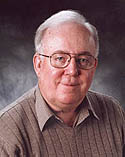 by Mike Harpold February 16, 2004
Using Permanent Fund Dividend application records, Mr. Hadland tracked 16,114 young Alaskans who were 15 and 16 years old in 1994. Among his other findings, just over 62
Leaving home to find economic opportunity is a familiar and expected story in America. I grew up in a small community in Southwestern Wisconsin whose economy depended entirely on dairy farming, not a bright future for a kid who hated to get out of bed in the morning. Still, the town tried hard to provide a future for its' youth, working hard to attract industry and eventually landing a satellite campus of the University of Wisconsin. Ketchikan is little different, struggling to bring some industry to town to replace our closed pulp mill and supporting a local campus of the University of Alaska. But being first in the category of Alaska towns whose children are least likely to return is saddening and ought to move all of us to try harder. We need more efforts like the Alaska Scholars program initiated by University of Alaska President Mark Hamilton several years ago. The top ten percent of graduates from each of Alaska's high schools receive free tuition in the UA system. The results are obvious, students graduating from the University of Alaska are far more likely to stay in Alaska and work, contributing to their own and our future. There are rewards for students who do so. Again quoting from Mr. Hadland's report, students who received one or more degrees from the University of Alaska had the highest average total Alaska earnings in 2002. Workers who had completed two or three years of study at the U of A had the second highest. The good news is that the Alaska Scholars program may be contributing to a statewide slowdown of 18 year olds leaving Alaska. The Ketchikan Campus of the University of Alaska Southeast has 430 students enrolled for credit classes this semester and sixty more who are enrolled for professional or noncredit courses. If you find that hard to believe, try and find a parking place anywhere near the campus on a weekday night. Some of those students, about two or three each semester, are our own Alaska Scholars, at least starting their college careers at home. But most students at the campus are returning to education after several years absence. Some of the best attended classes at the college are those that offer degrees or training for jobs that are available right here in Ketchikan, nursing for example. In recent years graduates of U of A or Weber State nursing programs offered through the college had jobs waiting for them. The college now offers courses leading to two and four year degrees in Fisheries. However, a promising Forestry Technician program developed by local professional foresters had to be dropped. Only one student registered for fall 2003 classes. The lesson is obvious, youth perceive forestry jobs as an economic dead-end. We need to do more to promote the opportunities that are here for our youth. The evidence indicates that our economy, which used to support numerous blue-collar jobs in fishing and forestry, has turned to one that supports skilled and semiskilled service jobs. Many of the people who hold those jobs come from out of town. For instance, seventy-eight percent of our teachers come from out of town. May God bless every one of them, but they are us now and we need to promote the idea among our own youth that careers in education are open to them right here in town. Many opportunities in Ketchikan are entrepreneurial. The year following the pulp mill closure, the number of people who reported that they earned their living through self-employment increased seven percent. The Chamber of Commerce, for example, could do a career mentoring program with good results. Our kids will stay if we show
them that they have a future here. There are bright spots in
this town and in our economy, but what do we expect our kids
to believe after seven years of hand wringing and looking for
handouts? Enough of that. Let's take a good and positive look
at who we are and what we've got, and get back to being that
little town that calls itself, Ketchi-CAN.
harpold@sitnews.org
All Rights Reserved
|
||
